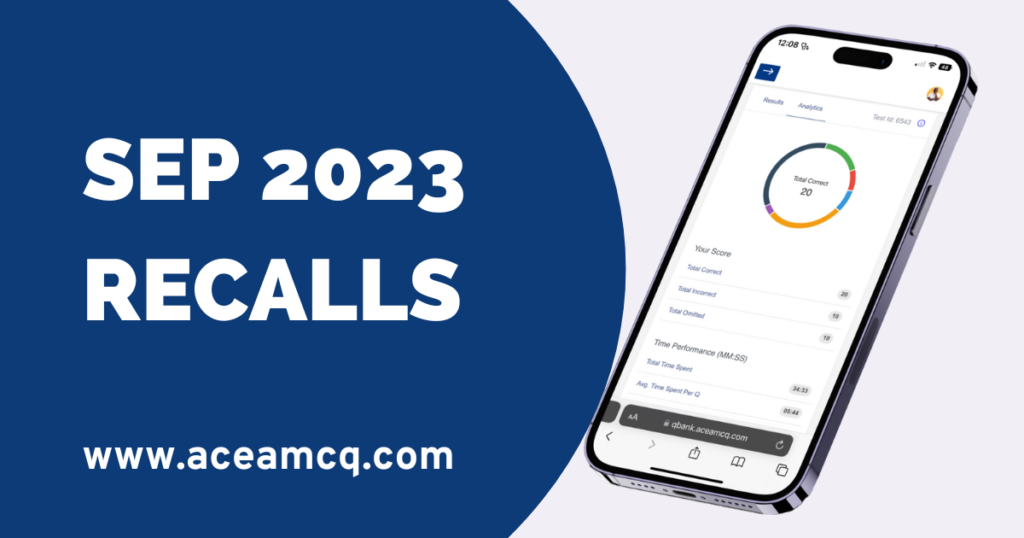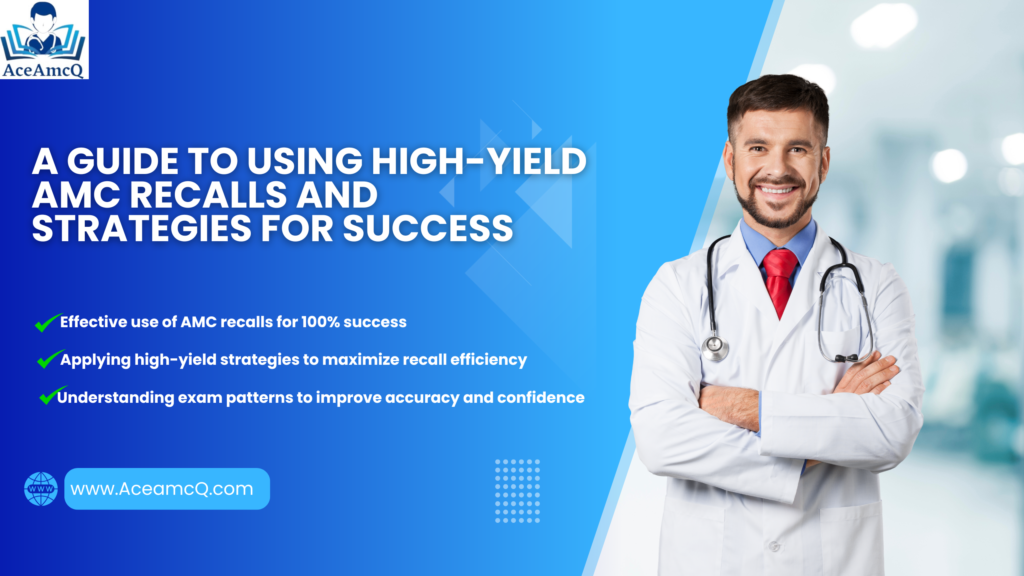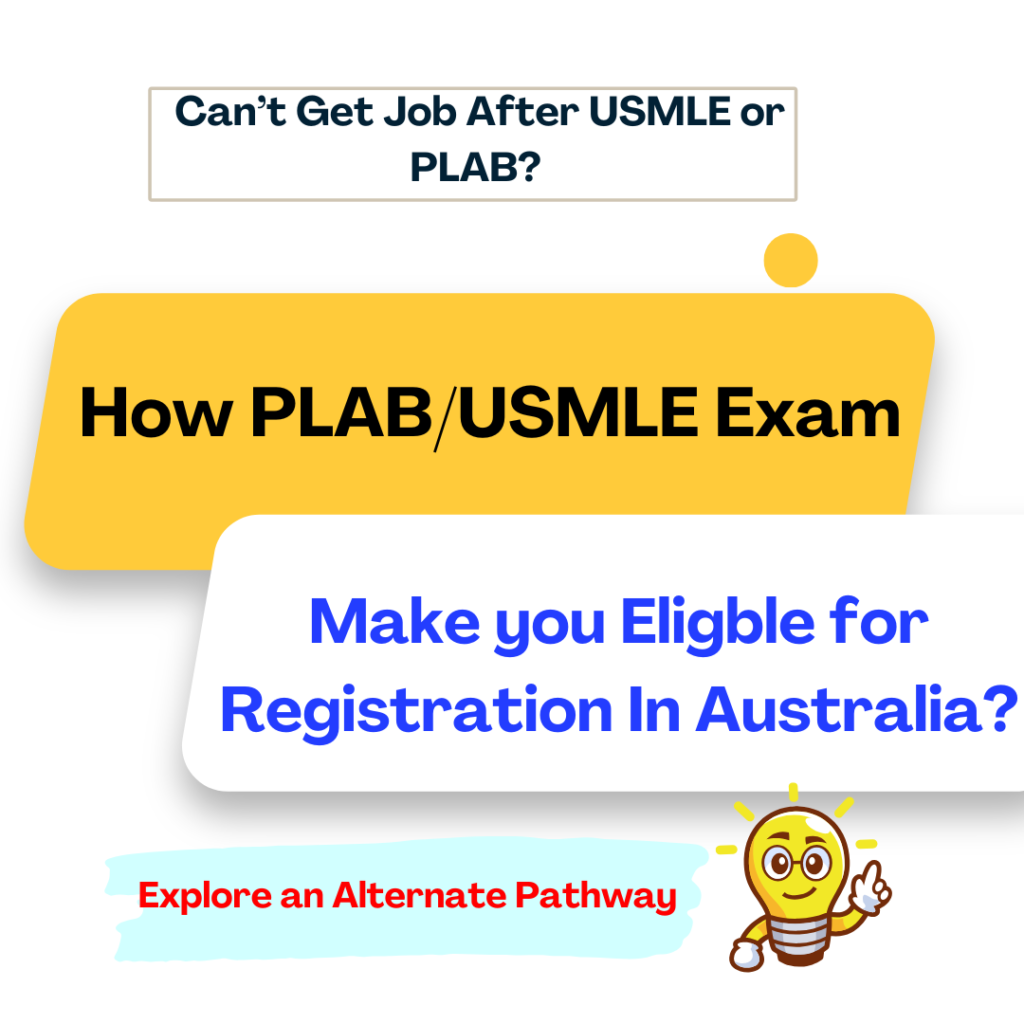Table of Contents
Australian Visas for International Medical Graduates (IMGs)
Australian Visas for International Medical Graduates – (IMGs) who wish to work in Australia must obtain the appropriate visa. Several visa options are available, depending on qualifications and employment status.

Relocating to Australia as an international medical graduate (IMG) is a significant milestone in your medical career. With its world-class healthcare system, diverse culture, and high standard of living, Australia offers an exceptional environment for professional growth and personal fulfillmentInternational medical graduates.
Understanding the Basics
The most commonly Visa acquired by international medical graduates are the following
-
- Skills in Demand SID (formerly known Temporary Skill Shortage (TSS) Visa (Subclass 482):
-
- Employer Nomination Scheme (ENS) Visa (Subclass 186):
-
- Skilled Independent Visa (Subclass 189):
Temporary Skill Shortage (TSS) Visa (Subclass 482):
This type of visa is the most common type sponsored by hospitals as well as other employers. This visa allows you to work in australia to work in australia temporarily.
Requirements: In most cases you need to meet the following requirements for a temporary job offers
-
- Employer sponsorship by an Australian hospital or clinic.
-
- Recognition of your medical qualifications by the Australian Medical Council (AMC)
-
- English proficiency (IELTS or OET scores may be required).
-
- A valid job offer.
Duration: Typically 2–4 years.
Permanent Residency: In some cases, this visa can lead to permanent residency after working in Australia for a specific period.
Employer Nomination Scheme (ENS) Visa (Subclass 186):
A permanent residency visa for skilled workers.
-
- Employer nomination.
-
- Minimum work experience or a successful completion of the TSS visa.
-
- Relevant AHPRA registration in Australia typically General or Specialist Registration
Employer sponsored permanent residency is not really an option for most IMGs (except if you are a consultant, working full time and commit to work for that hospital for certain years or working in a rural hospital for many years).
Skilled Independent Visa (Subclass 189):
A points-based permanent residency visa which requires you to attain at least 65 points to be eligible for for PR, though a Higher point increases chances of visa invitation for permanent residency.
You can use the following tables to calculate your points and where you stand. Please note that Australia has pre-set quota each year and are given out to Individuals with the highest no. of points as per EOIs.
1. AGE
Age points are assigned based on specific age ranges, typically between 18 and 44 years.
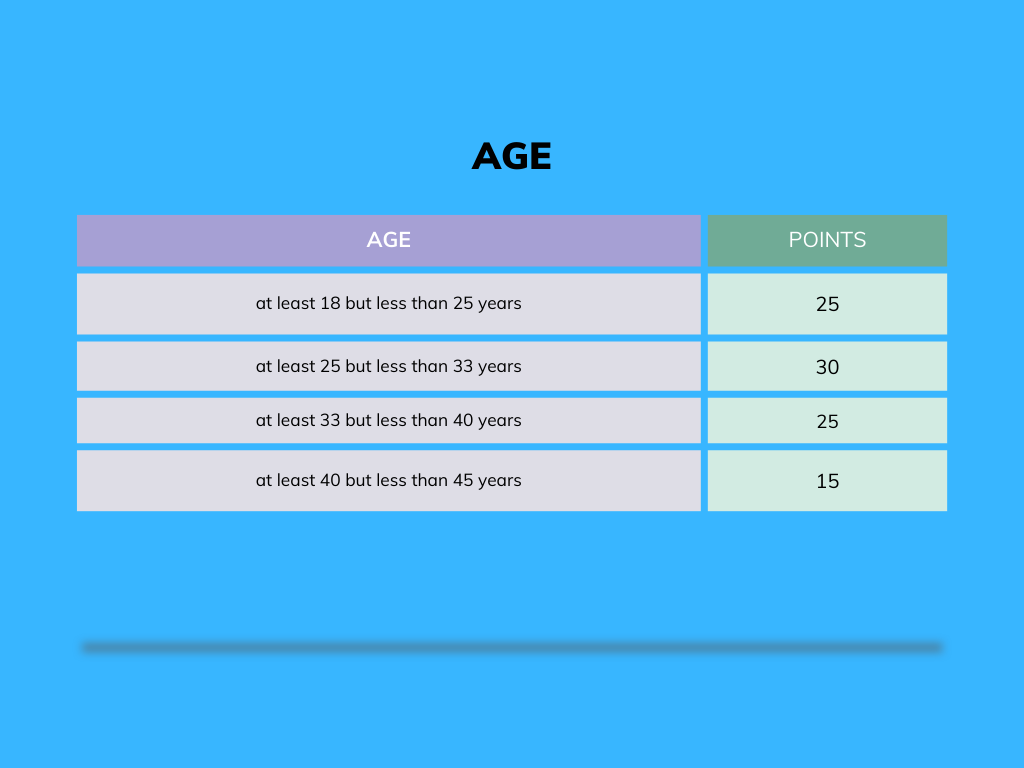
2. English Language Proficiency
English language proficiency is assessed using standardized tests such as IELTS, TOEFL, or PTE Academic
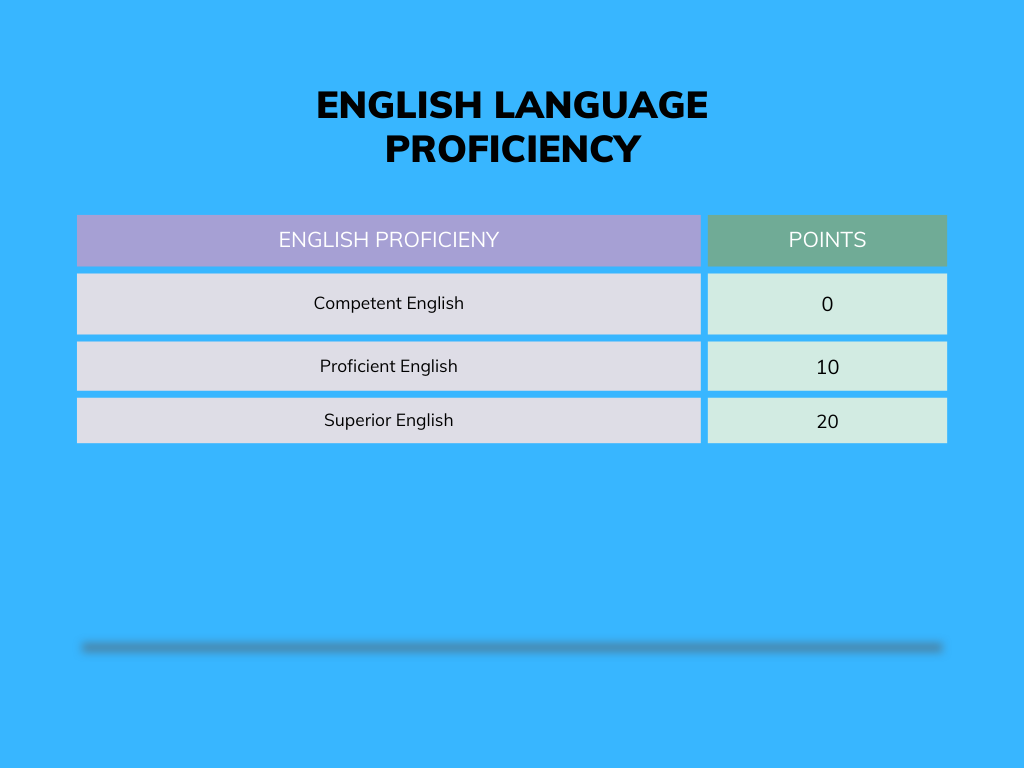
3.WORK EXPERIENCE
Your work experience in a relevant occupation plays a significant role in earning points, with more years of experience leading to higher points.
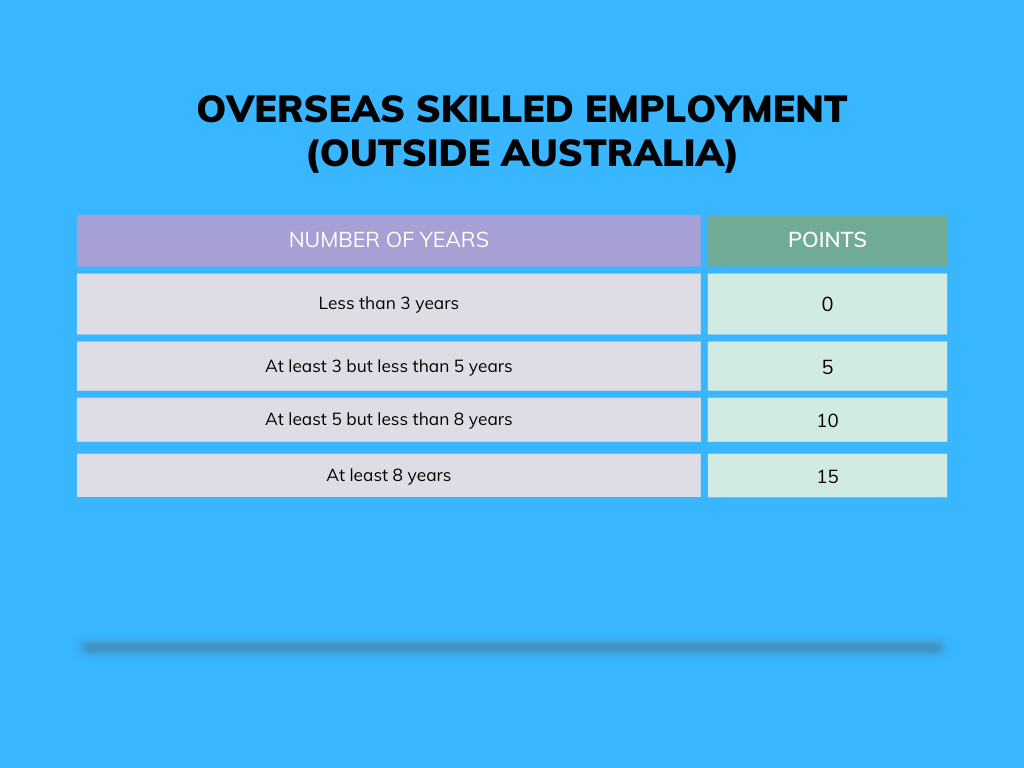
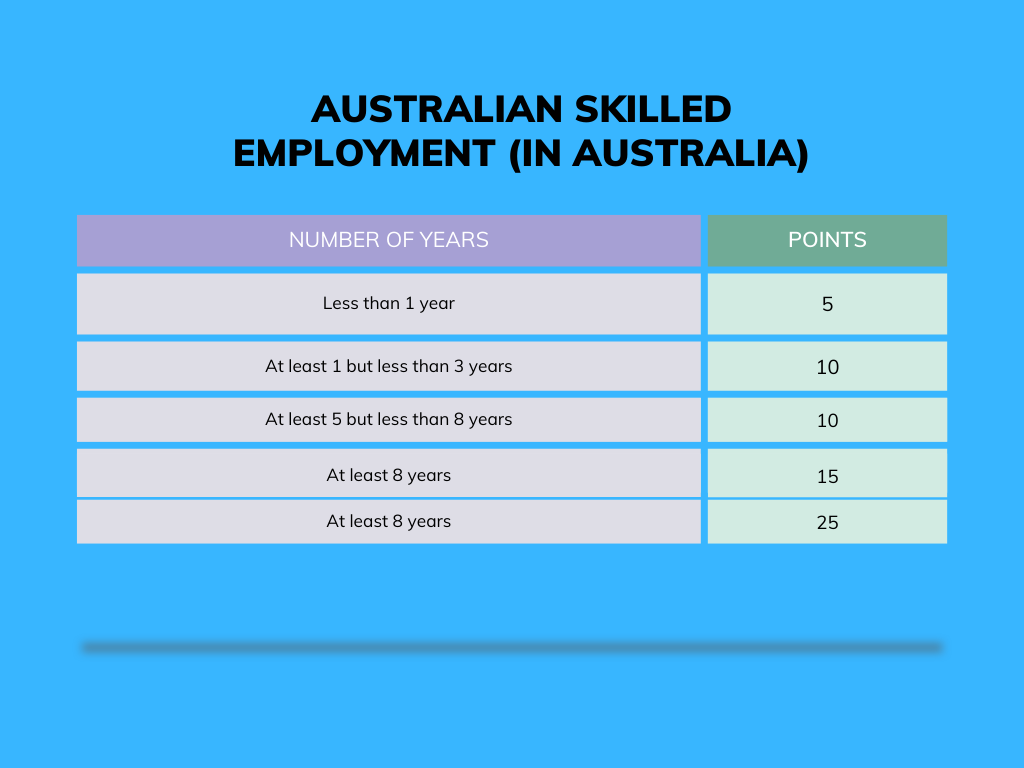
4.Educational Qualifications:
Your educational qualifications, including degrees and certifications, play a significant role in the points you earn, with higher qualifications typically yielding more points
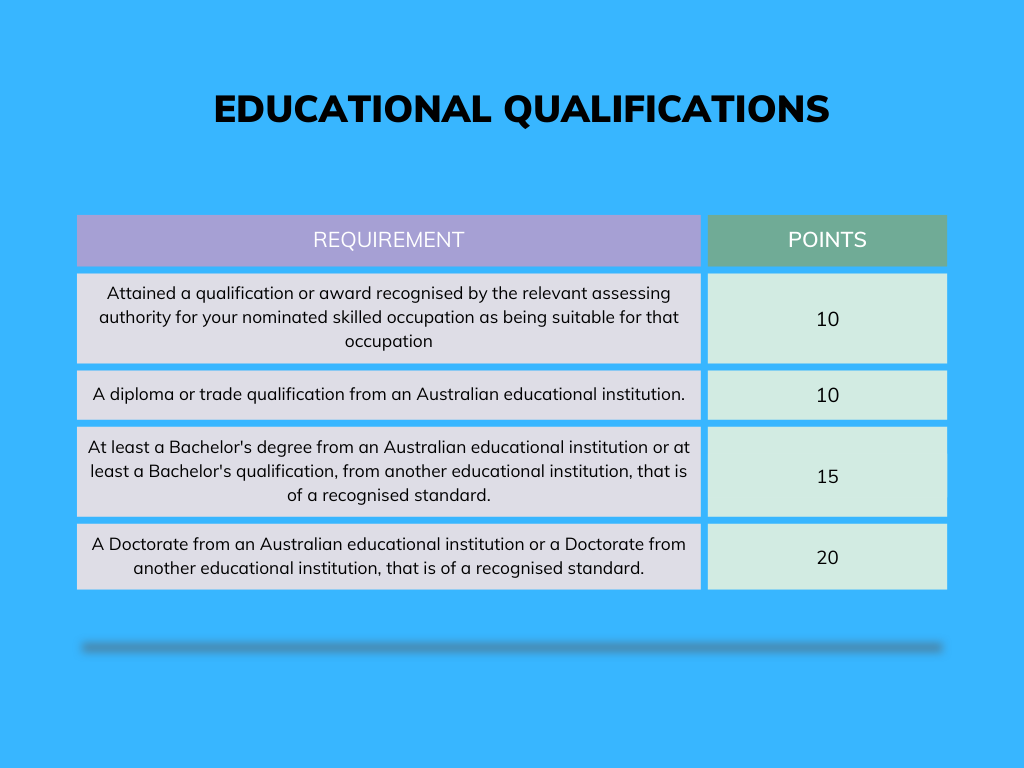
5.Australian Study Requirement If you have completed eligible studies in Australia, you could earn additional points.
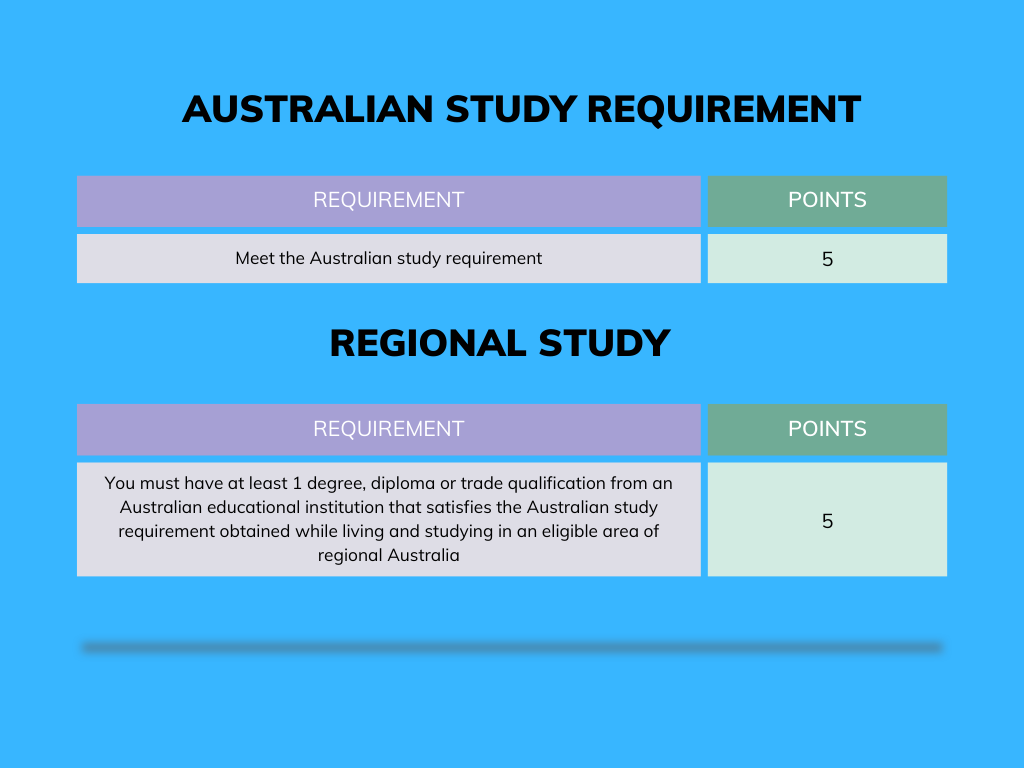
6.Partner Skills can contribute additional points if your partner meets certain criteria related to their age, English language proficiency, and skills assessment. These points are awarded as follows:
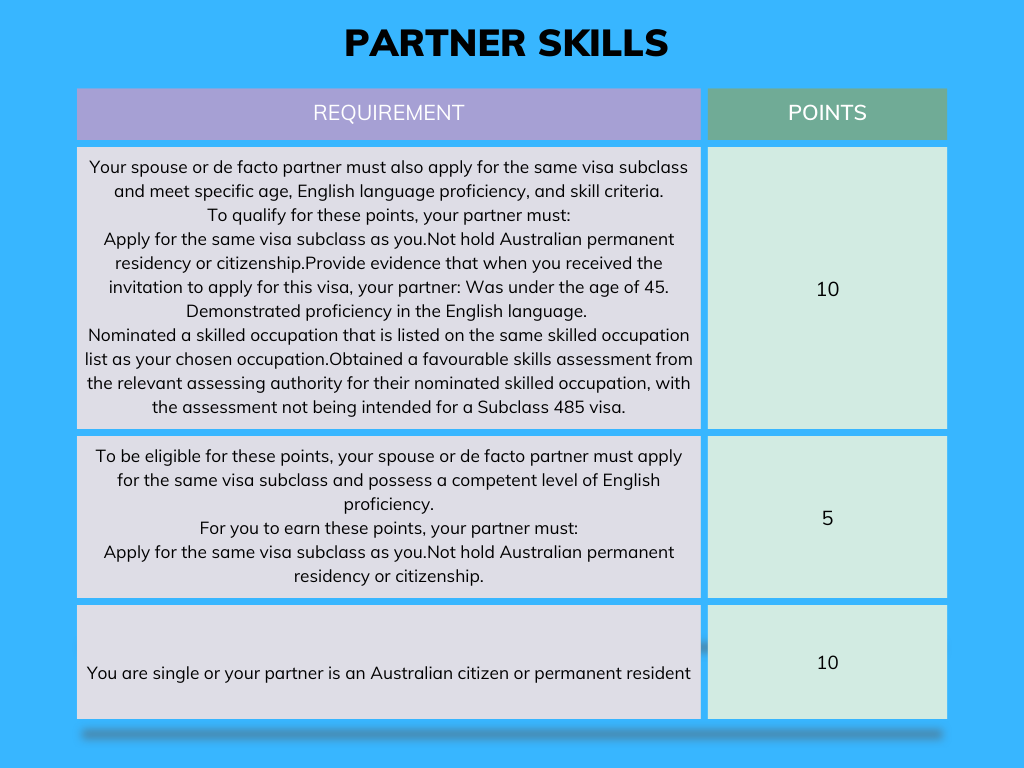
7.State or Territory Nomination Points
If a state or territory government nominates you, you can receive additional points through state or territory sponsorship. The criteria for these points are as follows:
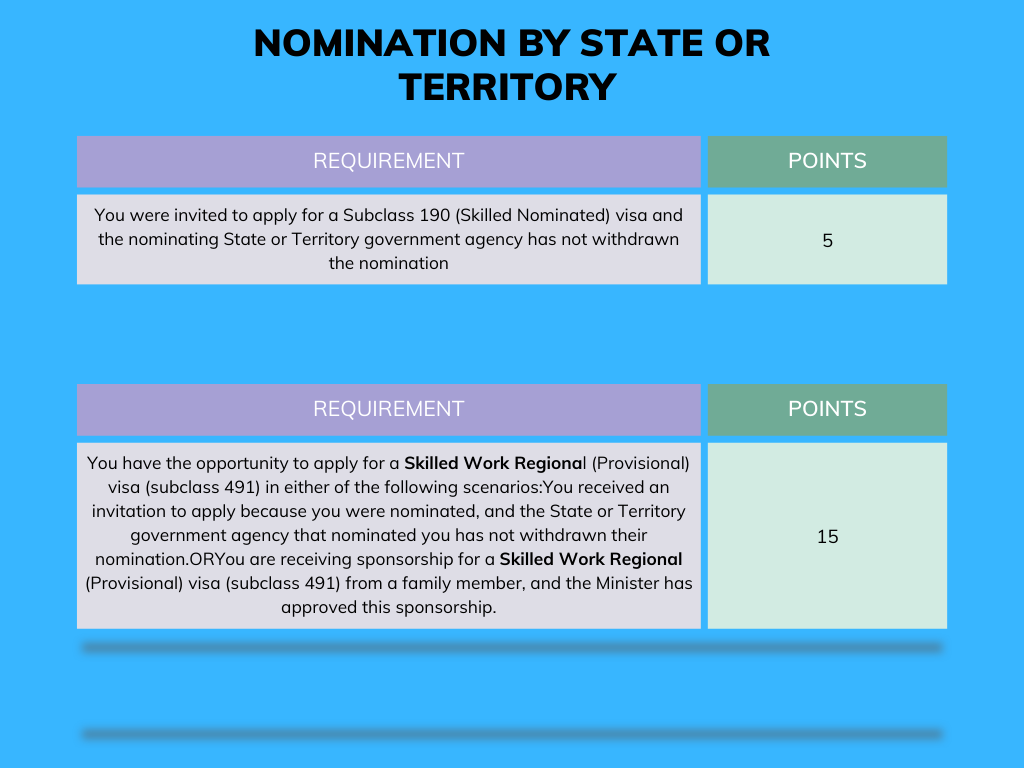
Documents required for this visa:
A digital photograph: A selfie from your phone is sufficient.
Digital copy of your passport: A clear, legible scan of your passport.
Nomination letter from hospital: This letter from the hospital confirming your nomination.
Police clearance certificate: From your home country and any other country where you have lived for more than a year since turning 18.
Evidence of English Language ability: Note that the English language requirements for the 482 visa are different and lower than those for AHPRA registration.
In-principle AHPRA registration letter: Proof of registration status with the Australian Health Practitioner Regulation Agency (AHPRA).
A copy of your primary medical qualification: The relevant documents showing your medical qualification.
Your Curriculum Vitae (CV): A detailed CV outlining your qualifications, work experience, and other relevant information.
Letter from you stating that you are a Genuine Temporary Entrant: This letter should include a declaration that you will comply with the visa conditions and not breach them.
Once you have gathered all the required documents, here are the steps to complete your visa application process:
-
- Submit the online application form: Complete the visa application form online and pay the required fee.
-
- Case Officer (CO) Assignment: After submission, a case officer (CO) will be assigned to your application. The CO will assess your case and may request further clarification or additional details if necessary.
-
- HAP ID Generation: As part of the process, the CO will generate a HAP ID. You will need this HAP ID to undergo your medical check-up.
-
- Finalize Visa Application: After your medical check-up and any other necessary steps, you will receive a copy of your finalized visa application in your inbox.
Role of Partner in Acquiring in Permanent Residency
The process of obtaining permanent residency (PR) is becoming increasingly competitive each year. Unfortunately, doctors are not able to earn additional points through completing certain courses, as other professions like engineering can. Additionally, while doctors need at least one year of Australian work experience to apply for PR, other professionals can submit their Expressions of Interest (EOIs) even if they are not yet in Australia. The entire PR process, from lodging an EOI to receiving the final approval, can take anywhere from months to years.
If your spouse works in a different profession, have them apply for PR instead.This could increase the overall points for the family, potentially improving the chances of obtaining permanent residency (PR) in Australia. Additionally, since the points-based system is competitive, applying through the spouse’s profession could offer an alternative route to securing PR.
Questions
What are the two primary permanent residency visa subclasses that doctors can apply for in Australia?
The two primary permanent residency visa subclasses for doctors are:
-
- Skilled Independent Visa (Subclass 189): A points-based system allocated from the federal government quota.
-
- Skilled Nominated Visa (Subclass 190): Allocated from the state government quota.
What is the difference between the Skilled Independent Visa (Subclass 189) and Skilled Nominated Visa (Subclass 190)?
The difference between the Skilled Independent Visa (Subclass 189) and Skilled Nominated Visa (Subclass 190):
-
- Subclass 189: Allocated based on federal government quotas and requires higher points.
-
- Subclass 190: Allocated based on state government nominations and is relatively easier to obtain. However, applicants must commit to working in the nominating state for at least 2 years.
Why the PR process is more competitive for doctors?
- Unlike other professionals, doctors cannot earn extra points through certain courses. Additionally, doctors must have at least 1 year of Australian work experience to be eligible for PR, while other professionals can apply without being in Australia.


